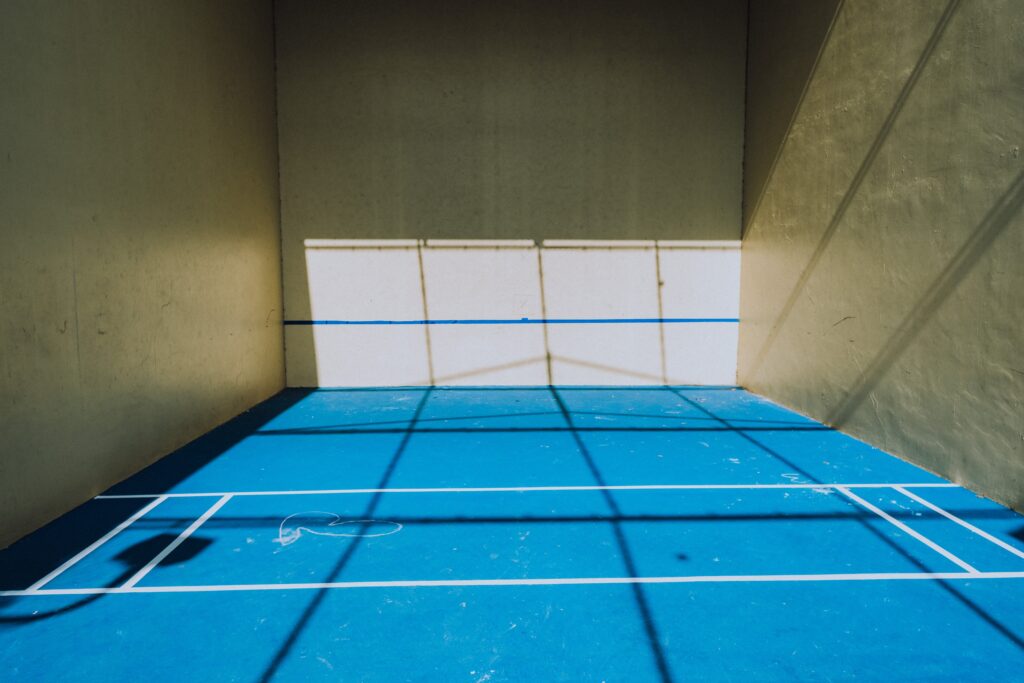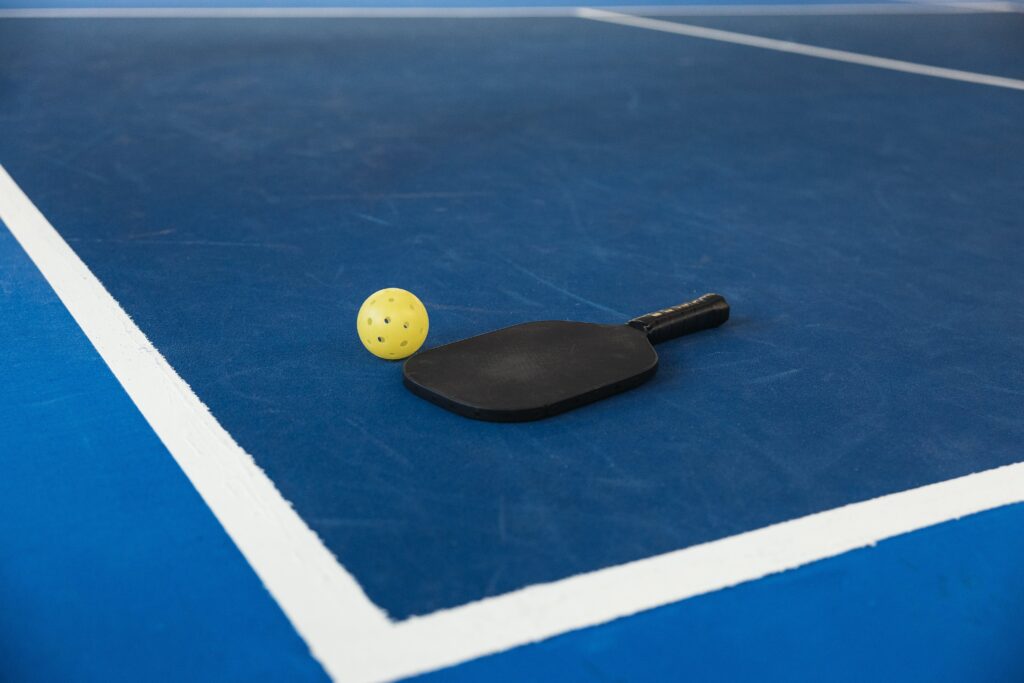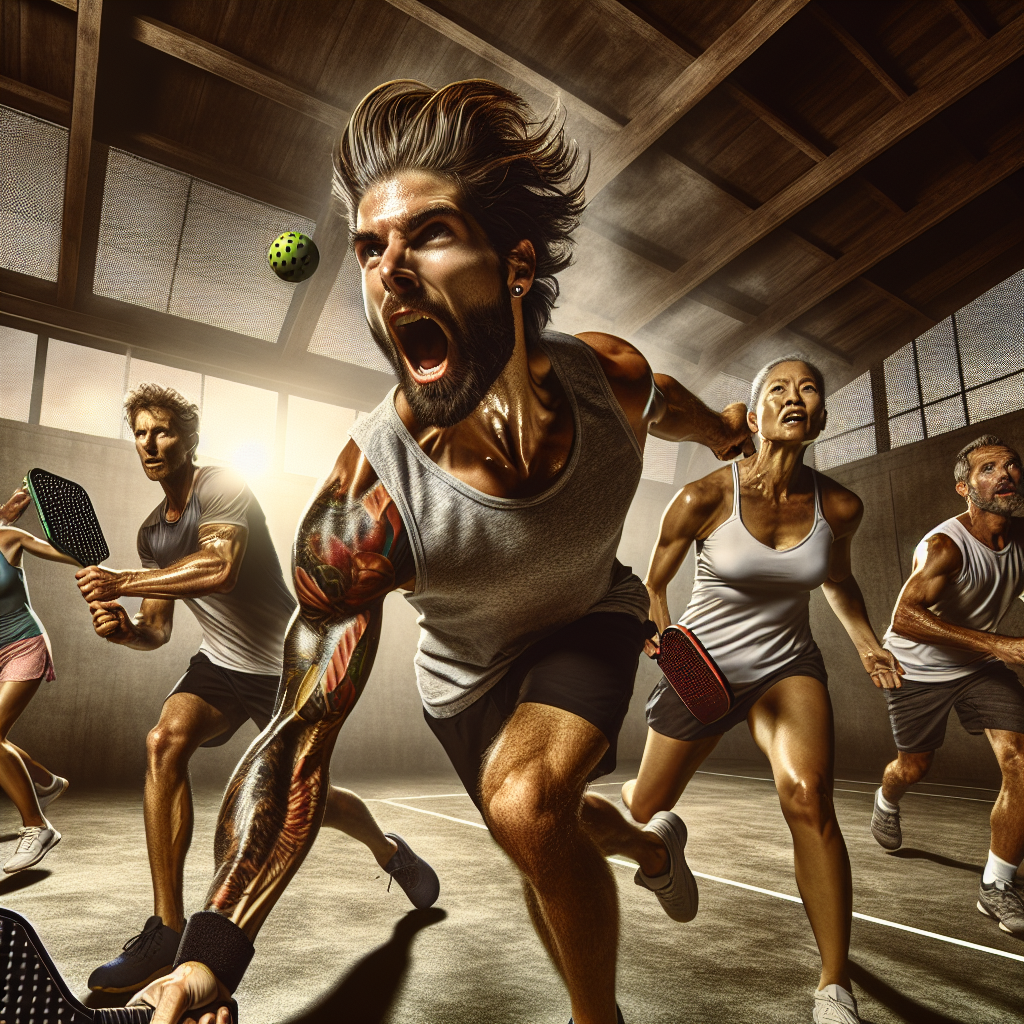Are you ready to master the exciting game of pickleball? Look no further than the USA Pickleball Rules, your comprehensive guide to the regulations and guidelines that govern this fast-paced sport. Whether you’re a beginner or a seasoned player, understanding and following these rules will ensure fair play, enjoyable matches, and a truly immersive pickleball experience. So get your paddles ready, tape up those pickleball courts, and let’s get started on this thrilling pickleball journey together!

Court Dimensions
Court Size
When it comes to playing pickleball, it’s important to have the appropriate court size. A standard pickleball court measures 20 feet wide by 44 feet long. This dimension ensures that players have enough space to move around and engage in dynamic gameplay. Having a well-defined court size also helps maintain fairness among players and ensures a level playing field.
Court Lines
To delineate the boundaries of the court, there are specific lines that need to be drawn. These lines include the baseline, sideline, non-volley zone line, centerline, and service court lines. The baseline runs parallel to the net and determines the length of the court. The sidelines define the width of the court. The non-volley zone line, also known as the kitchen line, is a critical boundary that restricts players from hitting volleys within a certain area. The centerline divides the court into two equal halves while the service court lines determine the serving area.
Net Height
The net height is an important aspect of pickleball that contributes to the overall gameplay experience. The net should be set at a height of 36 inches at the sidelines and 34 inches at the center. This slight variation in height allows for fair and competitive play by minimizing the advantage of a specific playing position. A properly set net height also ensures that players can hit shots over the net comfortably while still offering enough challenge.
Equipment
Paddle
The paddle is a crucial tool in pickleball, and choosing the right one can greatly impact your performance. Pickleball paddles are typically made of lightweight materials such as graphite, composite, or wood. They come in various sizes and shapes, so it’s essential to find one that feels comfortable in your hand and suits your playing style. The paddle’s face, which can be textured or smooth, also affects the ball’s spin and control. Experimenting with different paddles can help you find the perfect fit for your game.
Ball
The ball used in pickleball is specific to the sport, designed to provide optimal performance and durability. Pickleball balls are made of a sturdy plastic material with small holes, allowing for controlled flight and bounce characteristics. There are different types of pickleball balls available, such as indoor and outdoor variants, each suitable for specific playing conditions. It’s important to choose the appropriate ball depending on the playing surface and environment to ensure a fair and consistent game.
Net
The net is undoubtedly a fundamental component of the pickleball court. It separates the playing area and determines the boundaries for shots and volleys. The net should be securely fastened, properly tensioned, and have a proper height according to the regulations. It is usually made of synthetic materials, ensuring durability and withstanding the impact of shots during gameplay. An appropriately set net enhances fair play and ensures that players can engage in exciting and challenging rallies.
Serving
Position
The position you assume when serving in pickleball is crucial to ensure a legal and effective serve. To initiate a serve, the player must stand behind the baseline and within the confines of the service court. The server must have both feet behind the baseline and may not touch or step on it until after the ball is struck. This position ensures that the serve is executed correctly, with the ball being hit from the correct area of the court.
Faults
When serving in pickleball, certain faults can result in a loss of serve or a side out. Some common serving faults include stepping on or beyond the baseline before making contact with the ball, failing to hit the ball into the diagonal service court, striking the ball out of bounds, or hitting the ball into the net. It’s essential to be aware of these faults to avoid losing points and hand the serve over to your opponent.
Sequence
The serving sequence in pickleball follows a specific pattern that ensures fairness and equal opportunities for both teams. The serving team starts the game, and the first server is determined by a coin toss. After the first serve, the serving team continues until a fault occurs, resulting in a side out. When the serving team loses a point, the serve moves to the opposing team’s side, and the serving player rotates clockwise. This rotation allows all players to have a chance to serve throughout the game.
Scoring
Winning the Game
In pickleball, the game is typically played to 11 points, with a team needing to win by at least two points. This means that the winning team must have a minimum of 11 points and be ahead by two points to secure victory. If the score reaches a tie at 10-10, a “win by 2” rule is adopted, and the game continues until one team achieves a two-point advantage. This scoring system ensures that games are competitive and that a clear winner is determined.
Calling the Score
To maintain order and clarity during a pickleball game, it’s important to effectively communicate and call out the score. Traditionally, the serving team’s score is called first, followed by the receiving team’s score. For example, if the serving team has two points and the receiving team has four points, the server would announce “2-4.” Clear and accurate score calling helps players stay on track and ensures fair play throughout the game.
Side Out
A side out occurs when the serving team commits a fault or loses a point, resulting in the serve switching to the opposing team. It’s essentially a change of possession and provides an opportunity for the receiving team to score points. A side out can greatly impact the momentum of the game, often leading to a shift in dynamic and strategy. For players, it’s important to remain focused and adapt to the changing circumstances to maintain their competitive edge.

Double Bounce Rule
Definition
The double bounce rule is a fundamental aspect of pickleball that influences gameplay and rallies. According to this rule, each team must let the ball bounce once on each side before attempting to hit the ball in the air (volley). This rule promotes longer rallies and enables all players to participate actively. The double bounce rule is typically enforced during the serve and the return of serve, ensuring that players have an equal opportunity to engage in the game.
Exceptions
There are specific situations where the double bounce rule does not apply. These exceptions are primarily related to the non-volley zone. If the ball bounces within the non-volley zone, players are allowed to hit it in the air provided they are standing behind the zone’s boundary line. This exception allows for faster-paced exchanges near the net and adds an additional layer of strategy to gameplay. However, once a player steps into the non-volley zone, the double bounce rule becomes active again.
Faults
Foot Faults
Foot faults occur when a player violates the serving or receiving position rules by stepping on or beyond the baseline before making contact with the ball. This infraction results in a fault and a loss of serve or side out. It’s essential to be mindful of your positioning and ensure that both feet remain behind the baseline until after the ball has been struck. Avoiding foot faults helps maintain fair play and enables a smooth flow of the game.
Non-Volley Zone Violation
The non-volley zone, often referred to as the kitchen, is a critical area near the net that demands careful attention. To promote fair play and prevent volley dominance, players are not permitted to volley the ball while standing within the non-volley zone. Violating this rule by hitting the ball in the air from within the non-volley zone results in a fault and a loss of serve or side out. Staying aware of your positioning and refraining from hitting volleys within this zone ensures a balanced and challenging game.
Out of Bounds
When playing pickleball, it’s essential to hit the ball within the boundaries of the court. Hitting the ball out of bounds results in a fault, and the opposing team gains a point or the serve, depending on the situation. To avoid unnecessary faults and lost points, it’s important to practice shot control and aim for shots that land within the court’s lines. Developing accuracy and precision in your shots will greatly improve your overall gameplay and scoring.

Let Serves
During gameplay, there may be instances when the ball hits the net during a serve and still manages to land within the proper service court. This is known as a let serve, and it is considered a legal serve. In the event of a let serve, the serve is replayed with no penalty to the serving team. Let serves often add an element of unpredictability to the game, requiring players to be alert and ready to respond to unexpected outcomes.
Relationship Between Partners
Crossing the Plane
When playing pickleball with a partner, it’s important to understand the concept of crossing the plane. Crossing the plane refers to the imaginary line that extends from the sideline to the centerline of the court. While playing with a partner, you and your teammate should communicate and coordinate to ensure that you do not cross this plane during gameplay. Crossing the plane can result in confusion, hinder teamwork, and may even lead to a fault. By respecting the plane, you can maintain a harmonious and efficient partnership.
Communications
Effective communication with your partner is crucial in pickleball, as it fosters teamwork, strategy, and coordination. Clear and concise communication allows partners to anticipate each other’s moves, strategize effectively, and make split-second decisions. Whether it’s calling shots, indicating who will hit the ball, or alerting your partner about potential dangers, open communication ensures that you and your teammate are always on the same page. Develop a communication system that works for both of you and practice it consistently to enhance your playing dynamic.
Switching Courts
To ensure equal opportunities for all players, it’s customary to switch courts with your partner after each game or match. This rotation allows partners to experience different conditions and adapt to varying factors, such as wind, lighting, and court surface. Switching courts also promotes fairness and eliminates any potential advantage or disadvantage associated with a particular court. Embracing court switching as part of the game fosters sportsmanship and encourages players to adapt to different scenarios effectively.

Timeouts
Timeouts can be a valuable resource during pickleball games, allowing players to regroup, strategize, and take a moment to refocus. Each team is entitled to two timeouts per game, each lasting up to 60 seconds. Timeouts can be called by either team, and they provide an opportunity to discuss tactics, address fatigue, or break the momentum of the opponent. Effective use of timeouts can significantly impact the outcome of a game and serve as a valuable tool for generating a comeback or consolidating a lead.
At the Start of Play
Coin Toss
Before beginning a pickleball game, a coin toss is typically conducted to determine the first server. The referee or one of the players flips a coin, and the winning side of the coin toss chooses whether to serve or receive first. This simple procedure adds an element of chance and ensures fairness at the start of each game. The coin toss brings an exciting element of unpredictability, as it is unknown who will have the initial advantage in the game.
Warm-Up
To prepare for a pickleball game, players are allowed to warm up before the start. This warm-up period helps players get acclimated to the court, adjust to the conditions, and loosen up their muscles. During warm-up, players can practice their strokes, volleys, and serves, allowing them to find their rhythm and make any necessary adjustments. Utilizing the warm-up effectively can help athletes maximize their performance and be in the optimal state to compete.
In summary, understanding and adhering to the various aspects of pickleball rules allows for fair and enjoyable gameplay. From court dimensions to scoring and fault regulations, each element contributes to the sport’s integrity. By familiarizing yourself with these rules and refining your skills, you can fully immerse yourself in the exciting world of pickleball and develop into a competent and competitive player. So grab your paddles, find a partner, and get ready to experience the thrill of pickleball on the court!


